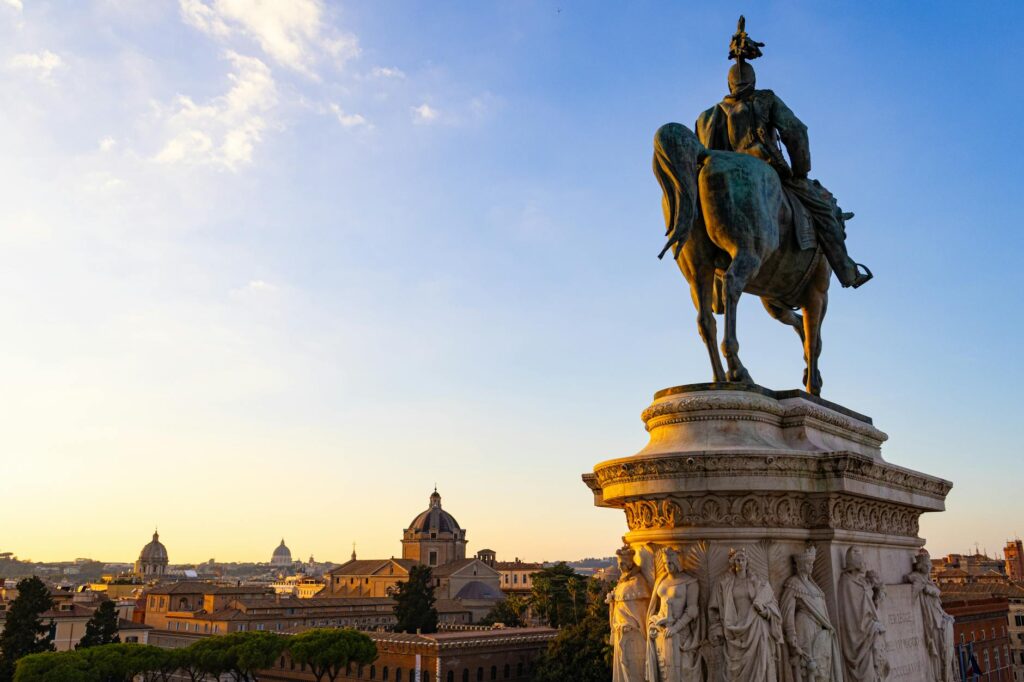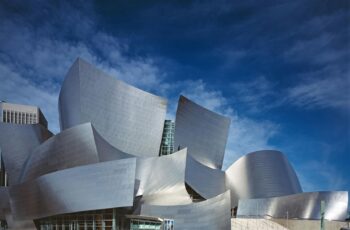Rome, a city steeped in history, boasts an architectural legacy that continues to inspire awe and wonder. From the grandeur of the Colosseum to the intricate beauty of the Pantheon, Roman architecture stands as a testament to the ingenuity and artistry of a bygone era. Let’s embark on a journey through time, exploring the key elements that shaped this remarkable architectural landscape.
The Roman Forum: Heart of the Empire
The Roman Forum, once the bustling center of ancient Roman life, provides a glimpse into the city’s political, social, and religious heart. Here, imposing structures like the Temple of Saturn and the Basilica Julia stood as symbols of power and governance.  The sheer scale of the Forum and the remnants of its many buildings offer a powerful testament to Roman engineering prowess.
The sheer scale of the Forum and the remnants of its many buildings offer a powerful testament to Roman engineering prowess.
The Colosseum: A Monument to Spectacle
No discussion of Roman architecture is complete without mentioning the Colosseum, an iconic amphitheater that hosted gladiatorial contests and public spectacles. Its impressive design, incorporating arches, vaults, and ingenious engineering solutions, allowed for the efficient movement of large crowds. [IMAGE_2_HERE] Learn more about its construction here.
Pantheon: Architectural Marvel
The Pantheon, a remarkably preserved temple, showcases the Romans’ mastery of concrete and dome construction. Its breathtaking dome, with its oculus opening to the sky, creates a sense of awe and wonder. The Pantheon’s influence on architectural design can still be felt today. [IMAGE_3_HERE] The building’s interior is just as striking as its exterior; find out more about its intricate details.
Aqueducts: Engineering Brilliance
Rome’s impressive network of aqueducts is a testament to Roman engineering ingenuity. These structures, designed to transport water over long distances, demonstrate a sophisticated understanding of hydraulics and construction techniques. [IMAGE_4_HERE] Their elegant arches and enduring presence are a symbol of Roman practicality and ambition. Find out more about Roman aqueducts in this article.
Baths: Centers of Social Life
Roman baths were more than just places for cleansing; they were vital social centers, offering opportunities for relaxation, socializing, and exercise. Structures like the Baths of Caracalla were vast complexes featuring intricate mosaics, stunning frescoes, and impressive architectural designs. [IMAGE_5_HERE] The sheer scale of these baths reflects the importance of public life in Roman society.
Temples: Centers of Worship
Numerous temples dotted the Roman landscape, each reflecting the city’s polytheistic religious beliefs. These structures, often adorned with elaborate carvings and statues, showcase the Roman talent for artistic expression and architectural grandeur. [IMAGE_6_HERE] The detailed craftsmanship is still visible on many surviving structures.
Triumphal Arches: Celebratory Monuments
Triumphal arches, erected to commemorate military victories and imperial achievements, are iconic symbols of Roman power and triumph. These structures, often adorned with intricate relief carvings, served as both celebratory monuments and powerful statements of imperial authority. [IMAGE_7_HERE]
Influence of Roman Architecture
The influence of Roman architecture on subsequent architectural styles is undeniable. Its innovative use of materials, its emphasis on grandeur and functionality, and its sophisticated engineering techniques continue to inspire architects and designers today. The legacy of Roman architecture remains visible in many buildings throughout the world.
From the mighty Colosseum to the serene Pantheon, Roman architecture showcases a remarkable blend of engineering brilliance, artistic expression, and cultural significance. Its enduring impact on the world of architecture is a testament to the ingenuity and creativity of the Roman civilization.
Frequently Asked Questions
What materials did the Romans primarily use in their construction? The Romans were masters of using readily available materials effectively, such as concrete, brick, stone, and marble, often in combination.
How did Roman architects manage such large-scale projects? Roman construction relied on meticulous planning, skilled labor, and efficient organization, with standardized components and techniques facilitating construction on a massive scale.
What are some of the key innovations of Roman architecture? The use of concrete, the development of the arch, vault, and dome, along with advanced water management systems, are some of the most significant contributions of Roman architecture.
What is the significance of the oculus in the Pantheon? The oculus, the circular opening in the Pantheon’s dome, symbolizes the connection between the earthly and the divine, and it’s a remarkable feat of engineering that allows natural light to illuminate the interior.

